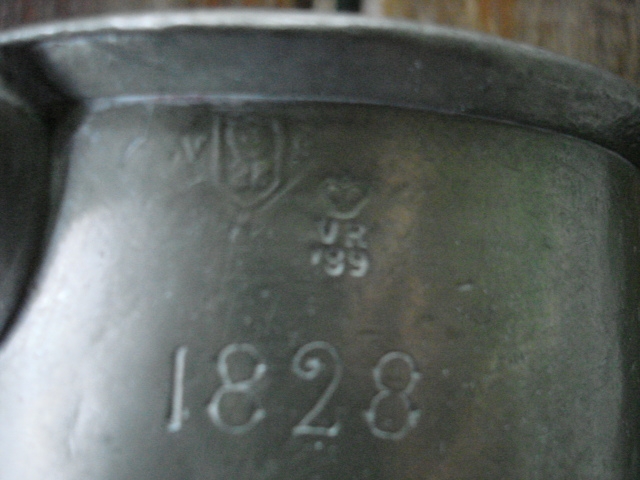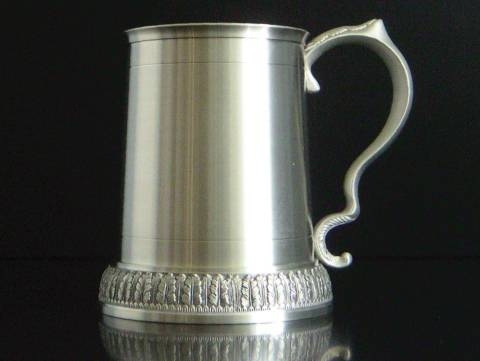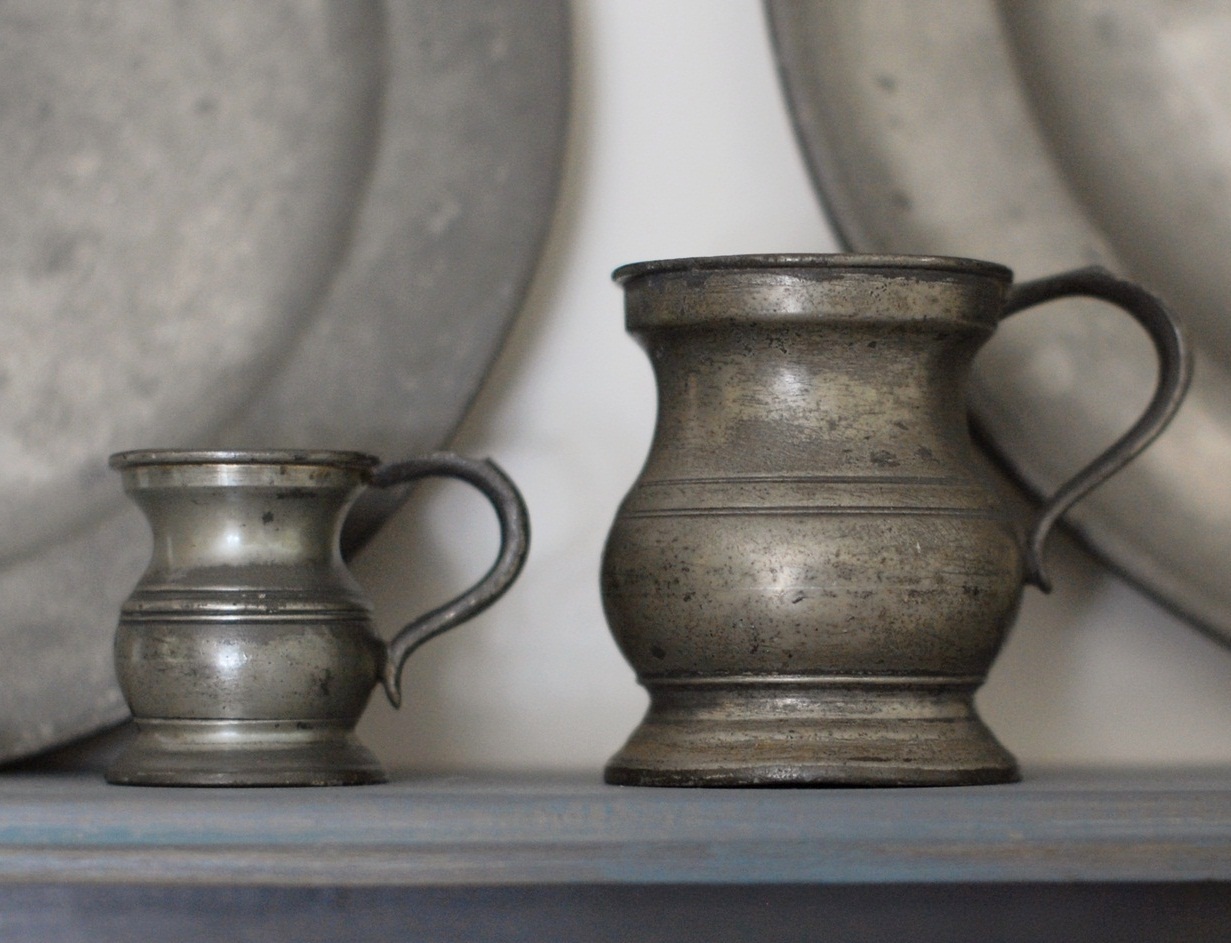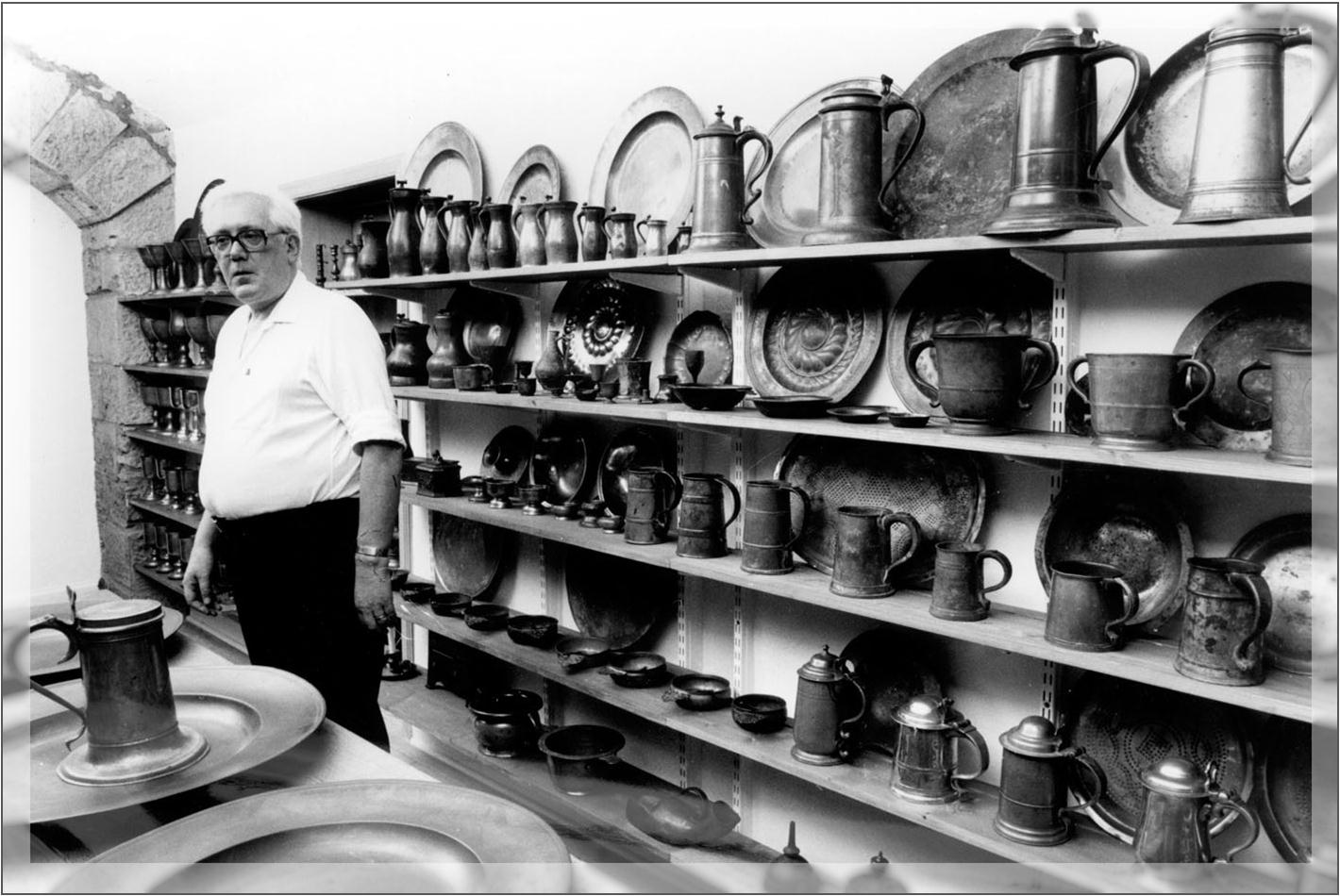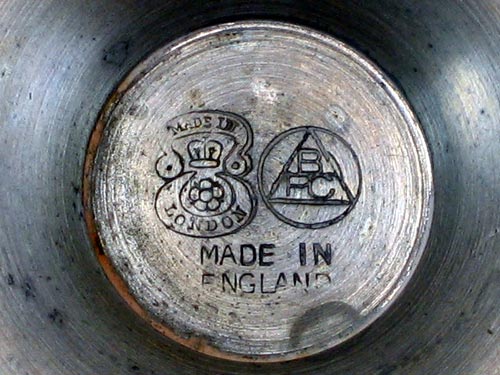Pewter is frequently found without a single mark, top, bottom, inside or out.
Much is laden with a wide variety of intriguing numbers, letters, words, and symbols that provides clues to maker, age, origin, and use. The following is an introduction to British pewter marks with references for pewter marks on pieces from mainland Europe and America.
British pewter may carry one or more of the following types of marks
- Pewterer’s marks
- Verification marks
- Ownership marks
- Merchant’s marks
Verification and Capacity Marks
Verification and capacity marks only appear on measures of capacity. A capacity mark (such as “pint”) is self explanatory. A verification mark signifies that the measure has been officially inspected and found to be of the correct capacity. Between 1826 and about 1878 each town generally had its own style of mark, but thereafter a uniform style was adopted consisting of a crown, the monarch’s initials (ie VR or ER) and a number which signifies the location. Measures were often inspected several times during their lifetime and thus can carry several verification marks.
Prior to the introduction of the Imperial Standard in 1826, a “crowned WR” mark was sometimes used to indicate that the measure was made to the William III ale standard. The mark was usually applied by the pewterer, not by an inspector.
Pre-1878
Post-1878


Ownership Marks
Owners often applied their own marks to pewter, particularly on sadware. The most common is a simple triad of initials stamped on the rim, the centre initial being the surname and the other two the forenames of the husband and wife. However, some owners had crests or shields engraved on their pewter.
Pub pots of the 19th and 20th century often have the pub name and address inscribed on the underside.
Merchant’s Marks
Medieval pewter sometimes has scratched symbols on the underside which are believed to be merchants’ marks. Medieval pewter is, however, fairly rare.
With the advent of mass manufacture of household pewter wares in the 18th and 19th centuries, makers especially in Birmingham, London and Sheffield, often sold large quantities of marked or, more usually, un-marked flatware and hollow-ware to wholesalers and retailers in the major cities. Many of these sellers then stamped the items with their own marks, thereby creating later confusion for collectors!

Marks on American pewter
American pewterers used touch marks, quality marks and, occasionally, hallmarks that are broadly similar to those used by British pewterers.
Marks on pewter from the European mainland
As a general rule, in mainland Europe the marking of pewter was more tightly controlled. by the local guilds than in Britain. The style of mark often identifies the town, and indeed often includes the emblem or arms of the town.
Dates in such marks have nothing to do with the pewterer. They simply indicate the date of the relevant guild regulations, which in some instances may have been introduced 200 years earlier.

